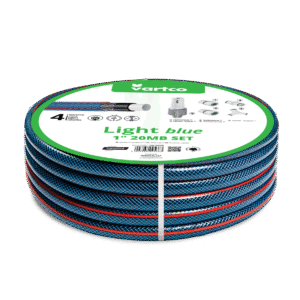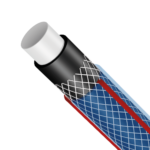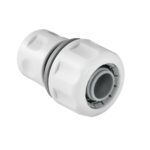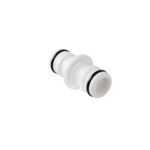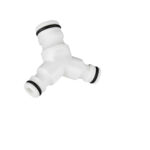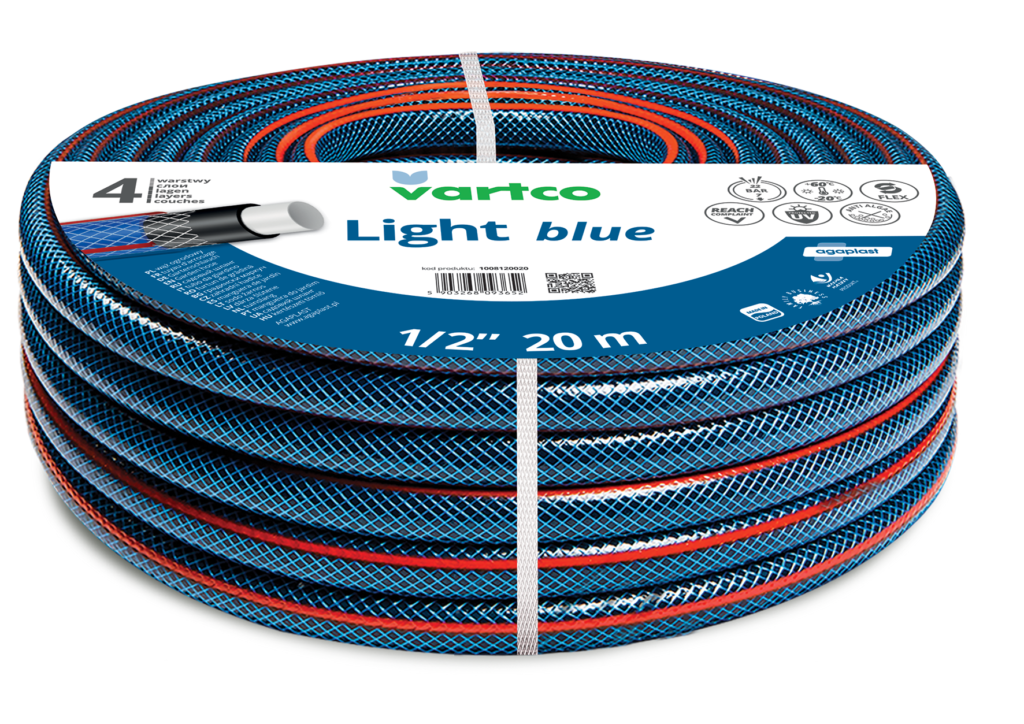
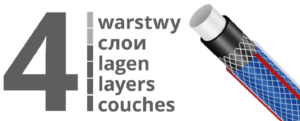
| Construction | 4-layer: (I) white inner layer permanently bonded with (II) black flexible PVC layer (III) cross braid reinforcement made of high-quality polyester yarn (IV) transparent coating |
| Working pressure | 7 bar |
| Burst pressure | 20 bar |
| Temperature range | -20°C/+60°C |
| Available lengths | 20m, 25m, 30m, 50m, 100m |
| Available diameters | 1/2, 3/4, 1 inch |
| Color | Blue with two red stripes on the sides |
| Warranty | 2 years |
| Compliance with regulations | Free of toxic substances and heavy metals – compliant with RoHS and REACH regulations |

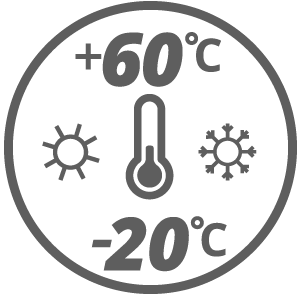










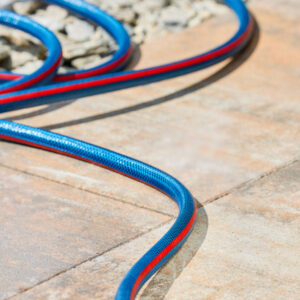
LIGHT BLUE 1" SET
Properties:
- 4-layer garden hose LIGHT BLUE 1″ 20m
- Hose quick connector 1″ LIGHT Line (LL01-034) x2
- Extension connector 1″ LIGHT Line (LL01-038)
- 3-way connector with a reduction 1″ LIGHT Line (LL01-040)
- Adjustable hose nozzle 1″ LIGHT Line (LL01-041)
Available lengths: 20 m
Guarantree: 2 years
GENERAL INFORMATION
Properly storing plastic hoses can significantly extend their lifetime. With a small investment of time and following simple rules, each user can have a real impact on hose optimal and long lifetime. Therefore, it is very important that the hose is not exposed to long-term sunlight, is protected against mechanical impacts, and is stored properly to avoid twists and kinks.
HOSE SELECTION GUIDE
Choosing the right hose adapted to the type of work will make the work easier. You should take into consideration the conditions in which it will be used – will it work indoors or outdoors? The type of media that you want to send through the hose is also important. Therefore, it is worth first considering what material or media you want to transport in order to determine the type of hose and select the appropriate quality. Verifying the connections and their compatibility will help you choose the appropriate hose diameter. Before purchasing, it is essential to check whether the recommended operating pressure of the hose will not be exceeded. The length of the selected hose depends on the surface area you plan to work with, and choosing the right accessories will further optimize its efficiency.
STORAGE
When you have finished using the hose, make sure that no substance for which it was used remains in it. When rolling up the hose for storage, try to avoid kinks. If possible, it is worth winding the hose on a reel or hose cart. Never hang the hose on a nail or hook – this creates central pressure and weakens the structure of the hose. The hose should be stored without tension, compression, or other factors that may cause its deformation. We recommend storing the hose indoors at an optimal temperature between 10°C and 25°C. Long-term low temperatures, especially below 0°C, will have a negative impact on hose lifetime. Do not store the hose at temperatures above 40°C or in direct proximity to heat sources. During storage, humidity should not exceed 65%. The storage period itself should be kept to a minimum. The hose should be protected against rodents and not allowed to be played with by pets.
EXPLOITATION
When opening the package, be careful not to damage the hose with a sharp tool. Before using the hose, visually inspect it for blockages, cuts, or mechanical damage. Always use the hose for its intended purpose and adhere to the specified working pressure. It is important that the media transferring through the hose has temperature adjusted to the recommended parameters. When using the hose, be careful not to kink, twist, or tangle it. Excessive point loads on the hose cause changes in its structure, loss of functional properties and, as a consequence, may result in its tearing. If you decide to install the hose permanently, ensure it can move freely under increased pressure. When installing the hose in a way that allows movement, check whether the hose will not rub against sharp objects or wall edges to avoid its uncontrolled kinking. When storing hoses, do not keep them under pressure. Always exercise caution and special attention when using hoses operating under pressure.
MAINTENANCE
The need for hose maintenance depends on how often you use it. When inspecting the hose, pay attention to whether it is properly connected, if its structure has any visible cracks, deformations, or irregular structure. The appearance of bubbles, deformations, or local bulges under pressure means that the hose must be replaced. It is not recommended to repair the hose. If only the ends of the hose are damaged, they can be cut off.

